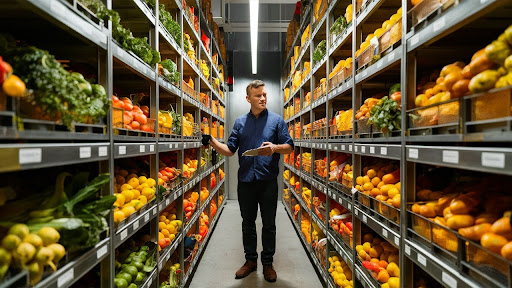Using Silo to Boost Efficiency and Transparency. In the bustling world of produce, staying ahead of operational challenges and ensuring transparency throughout the supply chain is paramount. Enter Silo—a revolutionary tool designed to streamline processes and drive efficiency in the produce industry. For supply chain managers, adopting Silo can be a game-changer, offering unparalleled benefits that simplify operations and enhance visibility.
In this comprehensive guide, we’ll explore how Silo’s solutions work, its manifold benefits, practical implementation steps, and why staying competitive in the produce sector necessitates such innovative solutions.
Understanding Silo’s core functionality
Silo is a cutting-edge platform that integrates seamlessly into the operations of produce businesses. It centralizes data, automates tasks, and facilitates smoother communication among stakeholders. Essentially, Silo acts as a digital assistant, handling everything from inventory management to order processing and logistics tracking.
Streamlining operations
For supply chain managers, managing day-to-day operations can be overwhelming. Silo simplifies this by providing a holistic view of the entire supply chain, enabling managers to make data-driven decisions. With real-time data accessibility, the platform ensures that you are always in the loop, minimizing the chances of errors and inefficiencies.
Enhancing communication
Silo fosters better communication across various departments and partners. By providing a centralized platform where all updates, orders, and reports are logged and shared, it eliminates the silos that typically hamper smooth operations. This ensures everyone—from the growers to the end customers—is on the same page.
The benefits of using Silo
One of the standout benefits of Silo is the enhanced transparency it offers. For supply chain managers, having a clear view of the entire process—from field to fork—is invaluable. Silo provides detailed insights into each stage of the supply chain, ensuring that each transaction and movement is tracked and recorded.
Reduced operational costs
Operational costs are a significant concern for any business. Silo helps in reducing these costs by automating various tasks and minimizing manual intervention. For instance, automated inventory management reduces wastage and ensures optimal stock levels, thereby reducing overhead expenses.
Enhanced efficiency
Efficiency is essential to any successful supply chain. Silo boosts efficiency by streamlining workflows and automating repetitive tasks. Supply chain managers can focus on more strategic initiatives instead of getting bogged down with administrative duties. The result is a more agile supply chain that can adapt swiftly to market demands.
Steps to implement Silo in your business
Before implementing Silo, it’s crucial to evaluate your existing systems and processes. Identify the areas where inefficiencies and bottlenecks exist. This will help you understand how Silo can address these specific issues and tailor the integration process accordingly.
Engage stakeholders
Successful implementation requires buy-in from all stakeholders. Organize meetings with your team to discuss the benefits of Silo and how it will impact their workflows. Training sessions can ensure that everyone is comfortable using the new system and fully understands its capabilities.
Integration process
Silo’s integration process is designed to be straightforward and minimally disruptive. Start by linking Silo with your existing ERP or inventory management systems. Gradually introduce its features, starting with inventory management and order processing, before moving on to more advanced functionalities like data analytics and forecasting.
Monitoring and optimization
Once Silo is up and running, continuously monitor its performance and get feedback from your team. Use this feedback to optimize the system further and address any issues that may arise. Regular updates and training sessions will ensure that your team remains adept at using the platform to its full potential.
Silo’s role in staying competitive
The produce industry is highly competitive and constantly evolving. Staying ahead requires not only understanding current trends but also being able to adapt quickly. Silo provides the tools necessary to stay agile, enabling supply chain managers to respond swiftly to changes in market demand and regulatory requirements.
Building a resilient supply chain
A robust, resilient supply chain can withstand disruptions and continue to operate smoothly. Silo enhances resilience by providing real-time visibility into every aspect of the supply chain. This allows for proactive management and quick resolution of any issues that may arise, ensuring that your operations remain uninterrupted.
Enhancing customer satisfaction
Ultimately, the goal of any supply chain is to deliver products to customers on time and in excellent condition. Silo contributes to this by ensuring that every step of the supply chain is optimized for efficiency and transparency. Happy customers equate to repeat business and a stronger bottom line.
Conclusion
In conclusion, integrating Silo into your supply chain operations offers a multitude of benefits, from enhancing transparency and efficiency to reducing operational costs and building a more resilient supply chain.
By streamlining workflows and fostering better communication, Silo ensures that you can respond swiftly to market demands, ultimately boosting customer satisfaction and staying competitive in the ever-evolving produce industry. As demonstrated through real-world case studies, the tangible benefits of Silo make it an invaluable asset for any produce business looking to optimize its operations and achieve sustained growth.
Don’t miss out on updates and news from Chicago heading

